#exergonic
Explore tagged Tumblr posts
Text
gonna kms😂😂

1 note
·
View note
Note
Random ask, can I ask what are apoptosis and caspases (in simple terms)?
I have been summoned
(my 'noorie rambles. be very afraid' tag will make so much sense now. I tried to talk about it in a way that's a way that's both engaging and simple. Lots of metaphors.)
Caspases destroy the cell if it needs to die. They dismantle the cell parts as the cell membrane turns into bubbles, containing all the damaged pieces within so that a white blood cell might disposes of them. That's apoptosis in a nutshell.
But why must the cell die you ask?
Plenty of reasons. Human embryos have webbed fingers, and apoptosis causes the webbing to dissipate. Tadpoles too, use apoptosis to rid of their tails so they can become frogs. Apoptosis opposes growth - aka mitosis - and it keeps the body in homeostasis - or a balance of sorts. The destruction to mitosis's creation.
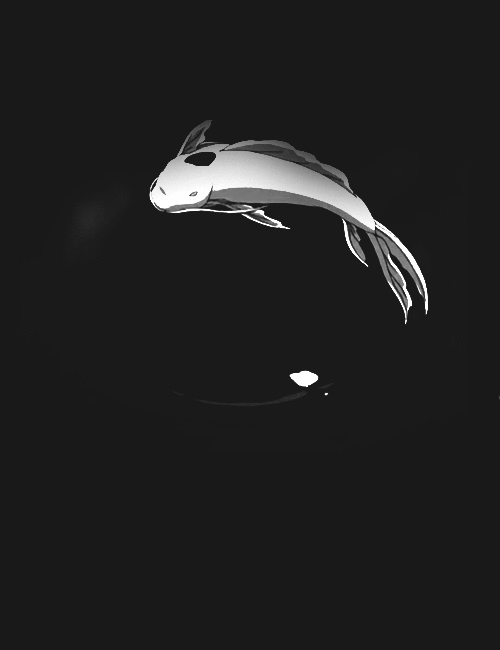
However, what I find most interesting, what is the subject of much research nowadays, and what holds the most opportunity for angsty biology fanfics (most important/j) is that apoptosis opposes tumorigenesis. In other words, if something goes wrong, if the cell gets some notion that it might try to cheat death and live forever, if it has the inklings of an idea to hijack the rest of the body through growing its own lump of cells and draining the body of its nutrients... if it decides to throw a mutiny at the expense of peace...
Then the cellular system realizes, and it activates the caspases.
(Usually how a cell 'decides' is when something wrong happens with genetic replication, mutations and such and such. There are two labels of genes relating to this. Proto-oncogenes promote cell growth and avoid apoptosis - these are the creation genes, the ones that wish to achieve the heights of production and throw all caution to the wind. Whereas tumor suppressor genes are... tumor suppressors. They are the little 'angel on the cell's shoulder' that says 'you've done wrong, now commit cell death and accept your fate'. When a proto-oncogene mutates, it becomes an oncogene. Basically, the genes that said to grow for the sake of the body now says to grow at the expense of the body, the 'devil on the cell's shoulder' won... and now it'll try to cheat death)

Caspases are a type of enzyme, which is a subset of proteins. I like thinking about it like this: enzymes are witches, spell crafters. Proteins in general function like worker bees, but enzymes are the ones who actively create and destroy, the ones that change the way the universe manifests so life can exist. They utilize reactants from their environment - materials which they are named after, such as proteases that cleave other proteins - to either create larger, energy storing molecules (endergonic reactions), or break down large, energy storing molecules to release energy (exergonic reactions).
(One type of enzyme that I like is called kinases, they basically initiate things, they tell the cell 'it's okay to do things' or 'this will be dangerous, let's not do that', or 'oof this cell doesn't have the proper genes, that could be a problem, how about we destroy everything so this doesn't become a big issue?')
When the cell needs to die, the caspases activate.
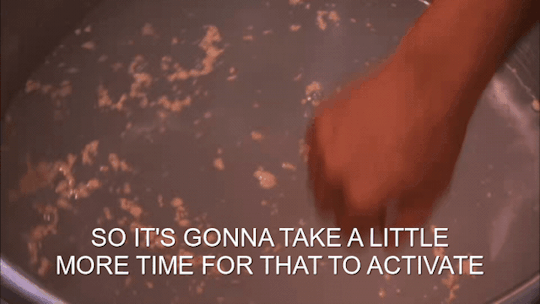
Humans have 14 caspases. I wish I knew what all of them are, but the pub med articles I read do not have a whole list of them like a pokedex from pokemon (at least that I have read so far, after ap testing there's one article I want to read that seems to have ANSWERS to a lot of my questions)
So imagine this, the cell has lots of caspases floating around in the cytoplasm/water jelly environment. These beings of death in huge numbers in a perpetual slumber, just floating around, until the cell decides it needs them to destroy its existence, and it activates them.
(ALTHOUGH some of my questions refer to the "caspase-dependent non-lethal cellular processes", so far what I've been able to find is that if the cell needs some repair to the cytoskeleton/structure of the cell, then it activates a few caspases to destroy parts of it, so that the repair may start.)
There are two types: inflammatory caspases (if I remember correctly, this is caspase 1,4, and... a few others I'll have to check) and apoptotic caspases. What we're interested in are the apoptotic caspases. Initiator caspases get activated first. The way I story-fy them/see them in my head is as the older sibling types who condone violence. If the cell needs to die because of an external signal - a message from far away to destroy itself, to which it must oblige - then caspase 8 activates. If the cell needs to die because of an internal signal - something inside isn't right, and what a havoc it would be to pass that on through replication, so the proteins decide the fate of the world it lives in, and it choses death for the sake of the wider body- then caspase 9 activates.
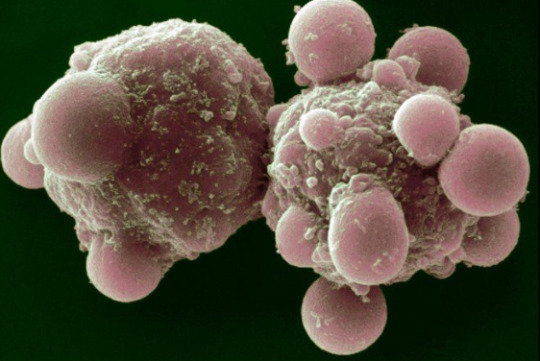
Both these initiator caspases cleave (meaning 'cut', these inactive beasts are not yet 'complete', so they need further modification after activation to work properly. If the cell were to create caspases fully functional and finished, the large number of caspases would kill the entire cell, so they don't finish, they subdue the ones behind their death, and make sure to regulate their slumber.) their 'younger, violent siblings': caspase 7 and caspase 3. The doll I have is a caspase 3.
(I've found more information on them than caspase 7... although.. the one article I found.... it should have information on them all, the amount of searching I've done for those sorts of answers... but alas... I need to read the material for the ap bio exam... which does not include caspases.... one day...)
Caspase 3, as far as I could gather, destroys the cytoskeleton. The cytoskeleton supports the entire cell, acting as the 'tent poles' that keep the floppy cell membrane from collapsing. Collapsing, however, is exactly what the caspase 3 wants. It dismantles the whole thing, along with activating and inactivating a slew of other proteins. (it's an assassin basically.)
And with this, the caspases bow, for the cell is separated within these small little 'blebs' (they look like bubbles) and the cell is destroyed.
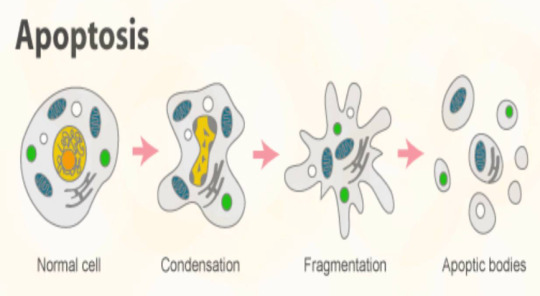
OH AND LAST LITTLE THING!
If something inhibits the caspases, the cell goes through with necrosis, which is basically instead of becoming little bubbles, the cell membrane ruptures and the cell 'guts spill out'
THANK YOU SO MUCH FOR THE ASK!! <3 <3 I got to blabber about caspases and it gave me happy sparkles.
ALSO, here's the doll I made for caspase 3:
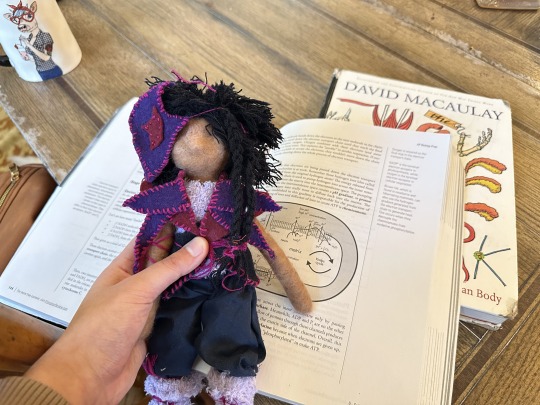
#biology#scientists#science#apoptosis#enzymes#caspases#science side of tumblr#science side of the internet#noorie infodumps. be very afraid#noorie answers asks#lobotomy for my brainrot
9 notes
·
View notes
Text
0 notes
Text
Everything in reality is either endergonic or exergonic.
0 notes
Text
it's so messed up that im studying biology as a biological organism and all the mitochondria and biochemical gradients and exergonic reactions inside me are trying so hard to learn about mitochondria and biochemical gradients and exergonic reactions. and they dont even know that im doing that.
0 notes
Text
Because the overall reaction is highly exergonic, ammonium production is limited by the slow operation (number of N2 molecules reduced per unit time is about 5 s^-1) of the nitrogenase complex.
"Plant Physiology and Development" int'l 6e - Taiz, L., Zeiger, E., Møller, I.M., Murphy, A.
#book quote#plant physiology and development#nonfiction#textbook#nitrogen#nitrogenase#chemical reaction#chemistry#ammonium#reduction
0 notes
Text
One little thing, because of a limit

Their exergonic properties must be a bit more expressed
The Archivists char. design sheets










Ach, quality drops-
It's kinda silly how visible is difference between a sheet made on a phone, on a new device, on a new program for the first time and next attempts on the new program xd
71 notes
·
View notes
Photo

“SAIBA UM DOS MOTIVOS QUE PODE LEVAR VOCÊ A ENGORDAR” 📲 AGENDAR CONSULTAS "MG" (34) 98809-3079 #deussejalouvado #ateaquiosenhornosajudou #nutricionistaelimarmoura #elimarmoura #nutricaoesportiva #nutricaouberlandia #nutricionistauberlandia #bodygee #bodymetrix #oligoscan #nutricionistacaldasnovas #nutricaoesportiva #uberlandia #caldasnovas #exergonic #endergonic (em Nutricionista Esportivo Elimar Moura) https://www.instagram.com/p/CRAZDSaFteo/?utm_medium=tumblr
#deussejalouvado#ateaquiosenhornosajudou#nutricionistaelimarmoura#elimarmoura#nutricaoesportiva#nutricaouberlandia#nutricionistauberlandia#bodygee#bodymetrix#oligoscan#nutricionistacaldasnovas#uberlandia#caldasnovas#exergonic#endergonic
0 notes
Text
Darn, I had a chemistry question from reading a book, and after writing 2 paragraphs and drawing a graph about it I realized what my confusion was and threw away the tumblr draft, which is good. But I don't get any social credit for being curious & working towards understanding which sucks. On the other hand my confusion was dumb so it's a wash
30 notes
·
View notes
Text
she favorable on my spontaneous til i exergonic
she cell on my bio til i logy
10 notes
·
View notes
Note
Why is seeing Alastor with kids the cutest thing ever?
Newton’s Fourth Law
#I was going to say because they cause an exergonic reaction and then realized that was too nerdy#hazbin hotel#alastor#hazbin alastor#hazbin hotel alastor#alastor hazbin hotel#radio demon#Alastor hazbin#the radio demon#alastor the radio demon
19 notes
·
View notes
Text
Study Buddy!Renjun
Pairing: Renjun X Reader (gender neutral)
Genre: high school fluff
Summary: Renjun brings you a sweet snack before he comes over to study with you!
Author’s Note: I should’ve had Y/N and Renjun study chemistry together since they got it in this story uwu

“Electron transfer from NADH to oxygen is an exergonic reaction with a free-energy change of —53 kcal/mol. Instead...” You could barely keep your eyes open and you could feel the energy draining out of your body as you pushed through. Honestly, you didn’t care about electrons and how they move, chain to chain, but you were sat in an uncomfortable chair in your room, hunched over your desk writing out pages of notes for an upcoming test. You huffed out air, looking back and wondered why you thought AP biology as a freshman was a good idea, especially when everyone else was wise enough to steer clear, unless they chose to go down the STEM (Science, Technology, Engineering, and Mathematics) path in the future.
Your eyes felt like they were about to fall out of your head if you continued to fill it more with information about cells and their respiration and fermentation. This was not at all at how you wished to spend your Friday afternoon, alas, you were only a few textbook pages to finishing the second-to-last chapter. You rolled back from your desk, letting your entire body just collapse into relaxation. Your arms dangled and your head just hung from the back of the chair.
Fortunately, you weren’t left to suffer alone. Renjun took the class too and it didn’t seem like he was suffering as much as you were. If anything, he was on top of the work, somehow, always ahead, which made him seem even more inhuman. All your friends had dodged the bullet of AP bio and even tried to warn you of the work loads, but you had brushed them all away.
You took a deep breath, looking at the time. “5:23” it read. You had been sitting here for almost two whole hours since school ended and Renjun said he would come over and study with you, but you hadn’t seen nor heard from him since sixth period. sitting back up in your seat, you patted your cheeks, waking yourself up before you buried yourself back into the world of cells and biology.
Your eyes were glued on the text, absorbing the best you could of the material. It was the final concept of the chapter you were on before you moved on to the final chapter, but it was like a giant rock blocked off whatever you were reading. Nothing made sense, no matter how many times you reread it from beginning to end, as slow as you could, word by word, but nothing. It seemed so unrelated to the topic and chapter. You finally reached your burning point and just gave up. The earbuds went in and the music played. You rolled back, sitting right in front of the window, watching the clouds float past and the sky change colors as the sun set. Your eyes began to droop as the music began to drone in your ears. It was a burning satisfaction now that your eyes were closed and you yawned, feeling the hot tears roll down your cheeks.
“Y/N?” You were shaken awake from your seat with your music paused and your phone on the ground. You were met with Renjun who knelt before you with his backpack slung over one of his shoulders. You pulled them out of your ear, stifling another yawn.
“Hey, what time is it?” your voice soft with sleep.
“Almost six.” He looked at his watch. He combed his fingers through your hair, knowing how much you found comfort whenever he did it. His hands cupped your face and his thumb rubbed your cheek soothingly.
“Where have you been?” You leaned against his touch, holding his hand in yours.
“Well, I first went home and made some material to help you study this chapter and then I went to the grocery store to get some fruit and here I am.”
He grabbed the platter of sliced fruits spread out in a way to make it look too pretty to eat. Strawberries and mangoes looked like flowers and kiwis accented the fruits as if they were leaves for the flowers. Tangerines and apple slices were spread all around and the center of the platter had a small bowl of grapes and blueberries.
“Wait, but we were assigned these chapters yesterday. I barely got through three chapters today and I couldn’t even understand the end of the fourth, but you already finished? Within a sitting?”
“Uh, I guess.” He scratched the back of his head standing up, placing the fruit platter onto a clear space on your desk. “I made flash cards and brought my notes so you could reference. I’m all yours for the rest of the night... Well, until I have to go home later.” He walked around you, wrapping his arms around your shoulders, pressing a kiss to your temple and cheek. “Ready?” He pulled up another chair and pulled you next to him to your desk.
“I don’t deserve you and how you understand and keep up all of this literally blows my mind.” You rested your head on your notebook, meeting his eyes with a pout on your lips.
“Golden hands, golden mind.” He winked at you with a smirk on his lips. “Okay, so, what do you need help with?” He reached into his backpack and pulled out his notebook, flipping through his prestigious notes.
You leaned back on his shoulder and flipped open your textbook back to where you had stopped. “This, I don’t get the versatility of catabolism and biosynthesis,” you sighed, feeling the frustration of rereading the same words over and over again to no prevail.
Without missing a beat, Renjun flipped to the pages in his notebook relaying his notes to you. You knew his words were from the textbook itself, but he just paraphrased them in a way that it all clicked. He fed you fruit as he explained, always asking you if you understood and if not, he would reword and rephrase.
Before you knew it, Renjun walked you through the entire five chapters, taught you with his flash cards along the way, and constantly fed you fruit until the plate was empty and your mind and stomach fuller. Crickets sung into the night as fireflies competed with the stars in the night sky for which captured the most beauty during the late hours.
“Get it?” He brushed away the eraser shavings from your notebook. “It’s a tough concept and to me honest, it took me awhile to pick it up.” He scratched the back of his head, hoping you weren’t as confused as he was when he first read it.
“I think so...” You stared at his notes, relaying his words in your mind. “Ugh, this is all so much, I shouldn’t have taken this class,” you groaned leaning back in your seat.
“Hey, don’t beat yourself up so much. Plus, this is only the beginning. We haven’t taken a science class with a sudden demand of workload like this before, so cut yourself some slack.” He took your hand in his and pressed a kiss to the back of it. “Plus, think about it. Everything we learned within this one assignment. So many things are going on within our bodies and all around us in all different shapes and sizes. There’s so much to learn and we only have a single lifetime. Just like our universe, there’s so many stars and endless possibilities out there. It could be all right next to us and we wouldn’t even know-“ he caught his own words when he saw the look in your eyes and the small smile on your lips. “Sorry, I’m rambling.” His eyes fell to his hands playing with yours, hiding the shy smile on his face, hoping you didn’t see the flush on his face.
“No, it’s fine. I love it when you ramble. You make life and the world and everything else sound so interesting and just, otherworldly. Plus.” You leaned closer to his face, seeing his eyes cast from yours to your lips just a few mere inches away. “Your eyes light up brighter than all the stars and fireflies when you do.” You smile pressing a chaste kiss against his lips making his hand tighten around yours, never wanting to let you go, never wanting this night to end. “And I hope you never lose that light.”
“When I’m with you, I could never.”
~~~~~ Masterlist for more! Thank you for reading!
Draft made: August 30, 2019 at 9:36pm EST Final Draft made: September 8, 2019 at 6:48pm EST Posted: October 6, 2019 at 4:00pm EST
#huang renjun#renjun#nct imagines#nct#nct dream#nct dream imagines#nct dream scenarios#nct scenarios#renjun imagines#renjun scenarios#nct dream x reader#nct x reader#renjun x reader#pillowfluffs#huang renjun x reader#huang renjun imagines#huang renjun scenarios
133 notes
·
View notes
Text
0 notes
Text
Reaction Types
Hydrolysis Reaction -- breaks down components by adding water
Dehydration Reaction -- two components brought together -- produces H2O
Endergonic Reaction -- reaction that requires input of energy
Exergonic Reaction -- reaction that gives off energy
Redox Reaction -- electron transfer reactions
Patreon | Ko-fi
#studyblr#notes#chemistry#chem#biology#bio#chemblr#bioblr#science#life science#organic chemistry#inorganic chemistry
15 notes
·
View notes
